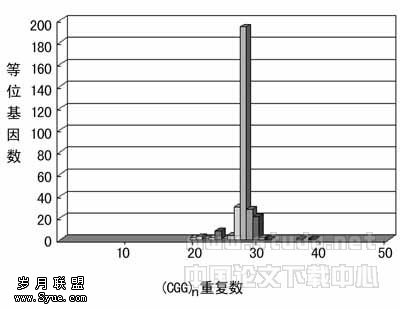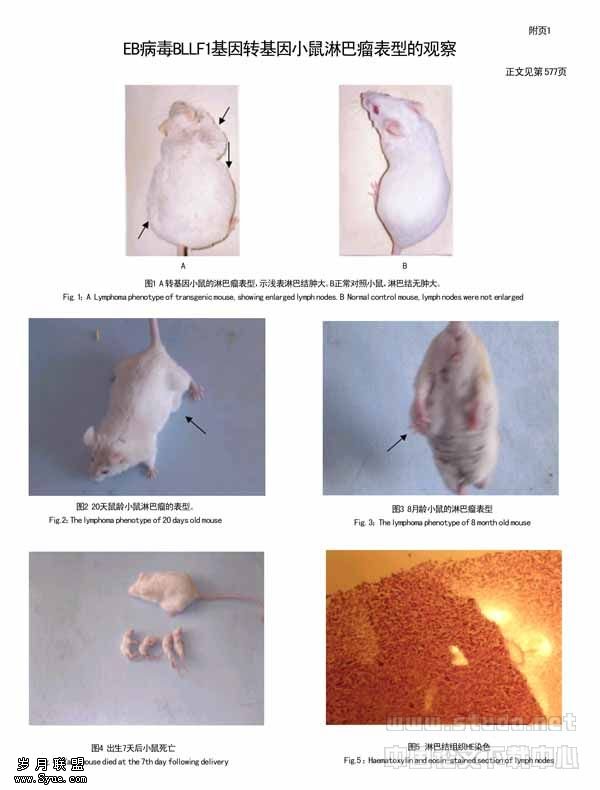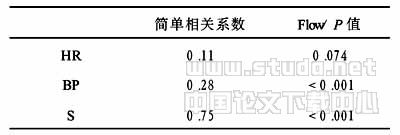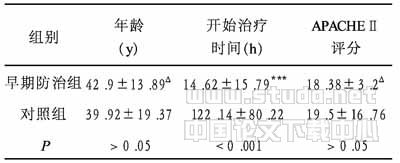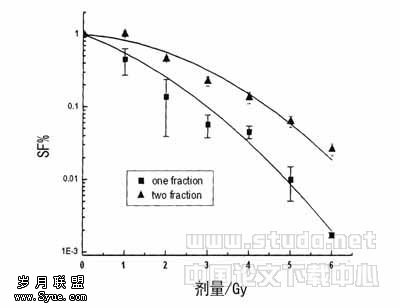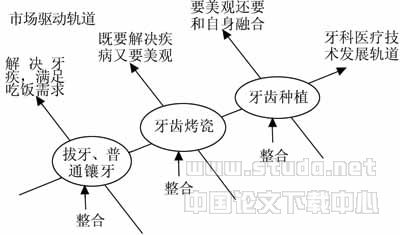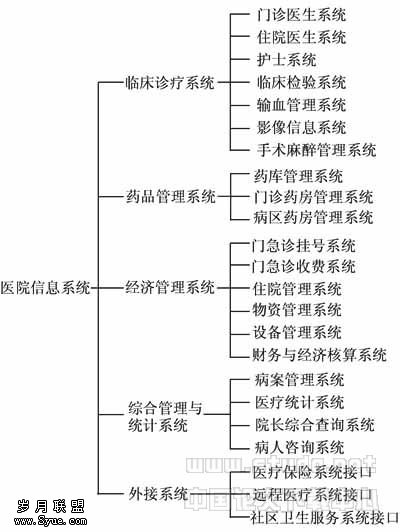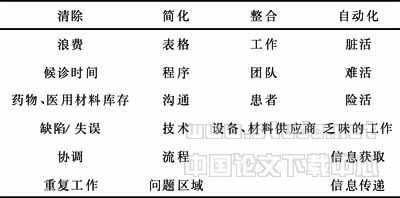细胞膜钙ATP酶在心肌缺血/再灌注和腺苷诱导预适应中的作用
【摘要】 目的:探讨在心肌缺血/再灌注和腺苷诱导预适应过程中细胞膜钙泵(PMCA)的可能作用。方法:将培养的乳鼠心肌细胞分为3组:缺血/再灌注组、腺苷预处理组和对照组。各组乳酸脱氢酶(LDH)漏出量以生化法检测(n=5);半定量RT?PCR检测各组PMCA基因转录水平(n=3);PMCA活性以定磷比色法测定(n=5)。结果:(1)缺血/再灌注组LDH漏出量明显增高(P<0.001),腺苷预处理组LDH漏出量显著降低(P<0.001);(2)各组间PMCA mRNA转录水平无显著性差异(P>0.05);(3)各组间PMCA蛋白活性无显著性差异(P>0.05)。结论:在乳鼠心肌细胞缺血/再灌注过程中PMCA无代偿功能;PMCA不直接参与腺苷诱导预适应的心肌保护作用。
【关键词】 钙ATP酶 钙 再灌注损伤 药物预处理 大鼠 Sprague?Dawley
Abstract:Objective To study the effectiveness of interstitial irradiation by 32P?chromic phosphate (32P?colloid) on the latent metastasis during lung cancer resection. Methods 73 patients with lung cancer underwent resection of tumor and interstitial administration of 32 P?colloid, by the same time span, 58 patients with same diagnosis underwent operation served as control group. After operation the dynamic distribution of body surface 32P?colloid activity, incidence of complication, rates of supra?clavicle lymph node (SCL) metastasis in different pathologic patterns, and survival rates at 1?,3?,5? year were studied. Results No operative death occurred in these two groups. The pathologic patterns, incidences of lymph node metastasis and the incidences of major complication after operation were no significant differences between these two groups (χ2=0.0031.696,P>0.05). The incidence of post?operative SCL metastasis in surgery plus 32P?colloid group was significantly lower than that in surgery group(χ2=4.5075.348,P<0.05 or P<0.01).1?,3?,5? year survival rates of the former group were 82.2%,56.2% and 38.7%, those of the latter group were 77.6%,41.7%and 25.5%. In reviewing the 1?,3?,5?year survival rates in different pathologic pattern groups, there was no significant statistical difference between groups of the 1?year survival rates (χ2=0.659,P>0.05), but the differences between the two groups of the 3?,5?year survival rates were significantly (χ2=4.207,3.997,P<0.05). Conclusion Interstitial injection of 32P?colloid during resection of lung cancer is a safe and effective procedure in controlling the latent lymphatic metastasis and local recurrence, and is surely to prolong the survival time of patients.
Key words:lung cancer; lymphatic metastasis; operative treatment; radiotherapy; 32P?colloid; phosphorus radioisotopes
[CLC number] R734.2; R817.541 [Document code] A [Article ID] 1671?6264(2008)04?0244?06
China is one of the countries in Asia where smoking rates are now high and where lung cancer is becoming more and more frequent as a consequence. In order to give patients with lung cancer a better therapy, many methods have been tried including improvement of surgical resection, a more thoroughly intrapulmonary lymph nodes dissection, and a better chemotherapy and radiotherapy[1?2]. Interstitial irradiation using 32P?chromic phosphate (32P?colloid) on the latent metastasis during lung cancer resection is a new method and has never been reported. From March 1997 to March 2001, we randomly choose 103 patients who underwent resection of tumor and gave them the interstitial injection of 32 P?colloid by the same time span. We choose 73 of these patients who had integrated data and 58 patients with same diagnosis underwent operation served as control group. Incidence of complication, rates of supra?clavicle lymph node (SCL) metastasis in different pathologic patterns, and survival rates at 1?,3?,5?year were studied, and the results are as follows.
1 Materials and Methods
1.1 Subjects
In surgery plus 32P?colloid group there were 73 patients, including 48 males and 25 females, aged 32-83 years (53.5 years in average ). The pathologic patterns in these patients were squamous cell carcinoma 48 cases(65.8%), adenocarcinoma 15 cases (20.5%) and small cell carcinoma 10 cases (13.7%). There were 58 patients in the control group who had only undergone surgical therapy including 33 males and 25 females, aged 36-74 years(51.5 years in average ). Their pathologic patterns were squamous cell carcinoma 40 cases (69.0%), adenocarcinoma 13 cases (22.4 % )and small cell carcinoma 5 cases(8.6%). The primary disease of all patients in the two groups were diagnosed after the examinations of chest X?ray, chest CT, fibre bronchoscope and sputum exfoliative cell examination before surgery. All routine examinations and Karnofsky score before surgery pointed out that all these patients were able to endure thoracotomy. Follow?up studies were performed in the third and the sixth month after discharged from hospital, then once every half year. On the first follow up visit, chest X?ray examination, chest CT or related serological examination were taken, thereafter inquired patients’ quality of life. The follow?up period was 12-60 months.
1.2 Operation methods
All patients of these two groups underwent thoracotomy either unilateral pneumonectomy or lobectomy with resection of visible lymph nodes. The lymph node of homolateral mediastimun were explored and carried out pathological examination and clinical staging. Among 73 cases of surgery plus 32P?colloid group there were unilateral pneumonectomy 15 cases (20.5%) and lobectomy 58 cases (79.5%) while among 58 cases of the control group unilateral pneumonectomy 12 cases (20.7%) and lobectomy 46 cases (79.3%).
1.3 Method of 32P?colloid administration
32P?colloid was supplied by Gaotong Isotope Co. Ltd, Chengdu,China. It is a pale green clarified solution, the diameter of colloid granule was 20-50 nm. The administrated activity for patients whose lung cancer have been incised was generally 296-370 MBq. The primary solution should be diluted to 10 ml with normal saline, well mixed and aspirated into a sterile syringe for use. During operation, after resection of diseased lung and visible LN, infiltrative injection were carried out respectively to the fatty and connective tissues at the bed of resected tumor, neighbor to the pulmonary hilar, carina, upper mediastinum and the sites suspected to have metastasis.
In the processing of the primary solution and injection, one should be careful to avoid any contaminations to the surroundings or utensils. Used syringes and the primary solution containers should be collected, sealed and disposed as the radioactive polluted material. Metal surgical apparatus should be rinsed with a large quantity of running water first and then handled as usual.
1.4 Postoperative treatment
Surgery plus 32P?colloid group and the control group were managed routinely. The postoperative treatment was same in both groups. For chemotherapy etoposide 100 mg·m-2 continuous intravenous infusion on first 3 days;cisplatin 80 mg·m-2, intravenous on first day, 21 days as a session, treatment completed with 4 sessions, and immunotherapy thymosinα 1.6 mg, injected subcutaneously in long term. To 10 patients in surgery plus 32P?colloid group after operation, we adopted radioactivity surface contamination surveyor with digital finger?shaped probe (Type ZC201) and put it on fixed sites of body surface, i.e., upper, middle and lower parts of lung fields on both sides, midaxillary lines, two inferior scapula angles, supra?sternal regions, xiphoid process, liver, spleen etc.daily to measure radioactive count for 10 s. We also recorded radioactive counting rates in drained pleural effusion daily.
1.5 Statistical analysis
Software of SAS (6.12 edition) was used. The period from beginning of treatment to the death of patient was defined as the survival period. The survival rates at 1, 3, 5?years are calculated by life table method. We performed Chi square test for the comparison among postoperative complications, LN positive rates, and post?operative metastatic rates of SCL and survival rates in various pathologic patterns of the two groups. P<0.05 indicated significant difference.
2 Results
2.1 Postoperative adverse reactions and complications There was no operation death in either group. Routine blood examinations after surgery showed that the functions of both liver and kidney had restored to the level before operation. Patients of surgery plus 32P?colloid group had no adverse gastrointestinal reaction or hyperpyrexia. The main complications during the peri?operation were shown as Tab 1 below, and there were no significant difference between the two groups (P>0.05)
2.2 The pathologic patterns, staging of patients and positive lymph nodes Staging of the patients of two groups (operation group & operation + 32P?colloid group ) were classified as stage I, stage Ⅱ(including ⅡA&ⅡB)and stage IIIA according to the “TNM classification of malignant tumors” UICC,1997. The results were presented as the number of positive LN vs the total ones which were excised during the operation, and there was no significant difference between the two groups (P>0.05, Tab 2).
Tab 1 Main complications during peri?operation
ComplicationOperation+32P?colloid
groupControl groupARDS6.8%(5/73)8.6%(5/58)empyema4.1%(3/73)3.4%(2/58)pulmonary infection9.6%(7/73)10.3%(6/58)infection of incision wound5.5%(4/73)6.9%(4/58)arrhythmia9.6%(7/73)8.6%(5/58)bronchopleural fistula00
Operation +32P?colloid group vs the control group by chi square test (χ2=0.021~0.144,P>0.05)
2.3 The dynamic distribution of body surface radioactivity after interstitial administration of 32P?colloid The detected radioactivity on thoracic surface was extenuated due to bandage dressing, therefore the detected activity at sternal fossa was higher than that at the sites of interstitial injection, the next was the interstitial injection site and ipsilateral mid axillary line, generally the ipsilateral lung field activity was 2 or more times than that of the contralateral side. The activity in liver field was slightly lower than that of lung field, and that of spleen field was lower than liver field. The first day detected data of radioactivity on the surface of interstitial injection sites was defined as the standard; the effective half degradation time was more than 15 days. The activity on the rest sites degraded rapidly beginning from the third day and subsequently it went down slowly and kept at low level. The radioactivity could be detected in pleural effusion two days after operation, and then lowered to the background level after further two days. Therefore the pleural effusion within 3 days after operation should be disposed into the radioactive disintegration pool as the routine procedure demanded.
2.4 Observation of curative effects
Follow?up was based on periodical examination to detect whether SCL enlarged or not, and accompanied by type?B sonography of neck, chest X?ray examination, CT, MRI and others. SCL metastases detected after resection were mainly located on right side; the number of metastasis on the right side was 2 times to that of the left side. The SCL metastasis rates of various pathological patterns were shown in Tab 3. The survival rates of 1, 3 and 5 years after resection for surgery plus 32P?colloid group and the control group were shown in Tab 4. Tab 2 TNM stages and positive rates of LN vs total LN
There was no significant difference of either TNM classification or positive rate of LN of the between the two groups of all the three pathologic patterns (χ2=0.012,2.082,0.003,P>0.05)Tab 3 Metastasis rates of SCL in lung cancer patients with different pathological patternssss
3 Discussion
The lung cancer without metastasis deserves the best curative effect with surgical resection. Most surgeons prefer to take an intrapulmonary lymph nodes dissection whether the operation is radical or not. And this demonstrates that the metastasis of the lymph nodes makes the difference between the success and failure after the surgical operation. Most recurrence and metastasis of the lung cancer happens within 2 years after operation, so these are the important factors relating to the survival rate. Previous researches have proved that this may relate to the occult micro metastasis foci in blood or lymphatic system [3]. Other researchers reported that the ratio of latent metastasis after the breast carcinoma was about 33% [4], and there existed significant differences between whether the patient had the latent metastasis or not , and the differences was also significant relating to the 5?year survival rate. Latent metastasis refers to those metastases of petty lymph nodes which are missed in diagnosis during routine pathological examination so that it is also called latent metastases of lymph nodes, the peculiar histopathologic pictures with immuno?histochemical staining are its final diagnosis criterions[5]. The use of different preparations of 32P in treating solid tumors, such as pancreatic carcinoma, hepatic carcinoma et al, had got certain effectiveness[6?7]. It has been reported that some researchers used the 32P?colloid(185?370 MBq)to cure the patients with malignant pericardial effusion and the effective rate was 94.5% without any side effects within 8 months[8]. Interstitial or intracavitary injection of the 32P?colloid had few side effects on the hemopoietic system, and without any side effects after operation. Animal experiment discovered 32P colloid injected into the implanted tumor mass of human pancreatic carcinoma cell Pc?3 loaded mice, executed on 14 d, metastatic Pc?3 was found in the inguinal lymph node(ILN)of control animal, while in treated animal the ILN presented apoptosis of metastatic tumor cells. In the treated group the development of lymphadenectasis is slower comparing with the control group, and the size of LN in also smaller[9?10]. This fact is the evidence illustrating the route of 32P colloid migration after interstitial injection in accordance to that of metastasis along the lymphatic system. 32P colloid has favorable killing and inhibiting effect on tumor cells and the metastatic micro foci in LN, and mild toxic effect on the neighboring tissues.
Tab 4 Comparison of 1? ,3?,5? year survival rates%
Pathologic patternsOperation+32P?colloid group1yr 3 yrs5yrs Control group1yr3yrs5yrsP*1yr3yrs5yrsSquamus cell carcinoma85.462.945.382.547.928.7P>0.05P<0.05P<0.05Adenocarcinoma8053.430.576.930.720.5P>0.05P<0.01P>0.05Small cell carcinoma703004000P<0.01P<0.01-
*Comparison of 1?,3?,5? year survival rates between two groups (χ2:Squamus cell carcinoma: 0.312,4.553,5.91;Adenocarcinoma:0.284,10.573,2.632;Small cell carcinoma:18.182,35.294)
The present research adopted surgical incision, assisted by 32P?colloid interstitial injection to prevent cancer from relapse and metastasis. The location of interstitial injection was in the exposed place of surgery field and it was also the drainage field of regional lymph node where cancer lied. Owing to the diffused interstitial administration after excision of tumor, the performing of γ?bremsstrahlung imaging could not be observed on the body surface. By detecting the post operative dynamic distribution of relative radioactivity from sub areas of body surface, it will substantially understand the distribution in vivo. The results demonstrated that the quantity of 32P?colloid retained in the contra lateral side is half of those on operation side, which indicated that although interstitial infiltration injection of 32P?colloid was mainly distributed in place of injection, part of it was phagocytized by macrophages and transported through lymphatic circulation into blood circulation. They could kill the spreading cancer cells which were resulted from squeezing and bleeding during operation, and subsequently preventing the lung hilum mediastinum and anterior scalenus muscles or SCL metastases of the opposite side. It was reported in analyzing 233 cases of SCL metastasis, no matter the pathological entities were adenocarcinoma , squamous carcinoma or undifferentiated carcinoma, their primary lesions were mostly in lung. Because drainage region of SCL was wide and there was no valvular structure in the efferent ducts of SCL, thoracic duct and right lymph duct, cancer cells in main lymphatic vessels might retrogradely move to SCL[11]. 32P?colloid injected interstitially might take the same path to eliminate cancer cells. The results of this research showed that post?operative SCL metastisis rates in surgery plus 32P?colloid group are markedly lower than those of the control group, and that demonstrated the surgery matched with 32P?colloid had a remarkably curative effect for lymphatic duct metastasis and particularly more effective in treating adenocarcinoma and small cell carcinoma which were liable to spread. In our research, most patients of the control group recurred or had metastasis in thorax within 2 years after operation and died mostly from distant metastasis to brain or bone and their survival rates at 1?,3?and 5? years were close to those reported in the literature. In their reports, the authors insisted that the chemotherapy and radiotherapy might have a good short?term effect but a worse and worse long?term effect [12]. And the reason may due to the injury of the body and the descent of the immunity caused by the chemotherapy and the radiotherapy. So the survival time is hard to prolong. In our study the 1?,3?,5? year survival rates of surgery+32P colloid group is higher than those of control group with significant statistical difference(P<0.05), denoted that surgery plus 32P colloid can effectively kill the occult metastatic foci, and control the postoperative focal relapse and distant metastasis, resulted in prolonging the medium and long term surviving time.
The statistics showed that the surgery plus 32P?colloid can significantly improve the 3? year survival rate of the lung cancer. And the data had demonstrated the advantage of this therapy vs the control group. The 5? year survival rate of the 32P?colloid group was higher than that of control group but the difference was not significant(P>0.05) .It may be due to the limitation of the samples or the imperfection of the comprehensive treatment. We contributed the advantage of the 32P which can prolong survival time to its targeting character in vivo and emitting perpetually radioactivity which is superior to chemotherapy and other medicines. It not only can kill proliferating cancer cells, but also eliminate or keep cancer cells at arresting state. Meanwhile, appropriate dosage of radioactivity can induce differentiation of tumor cells to the normal way, which has been proven in experimental research in the hepatocarcinoma and pancreatic cancer[10,13].
32P?colloid used in this research is actually belonging to nanometer materials, but it differs from nanometer of magnetic ferric oxide which need of adding extra magnetic field to follow magnetic guide. The targeting characteristic of 32P?colloid itself ensures it easy to be used in operation. That means after excision of tumor, patients are given punctiform infiltrative injection into interstitial tissues around tumor bed and drainage region of lymph nodes, and injection process will take 3~5 minutes . The physiochemical property of 32P?colloid is stable, for which it can be mixed with many kinds of diluents or medicinal preparations, but it will not be solved in body fluid. After it is injected into tissues, it seldom dissociates, so 32P?colloid contents in post?operative chest drainage are limited and thus it is not necessary to specially isolate these patients. But in operative manipulation, attention should be paid to bronchial stump in order to avoid the irreversible radiation injury.
【】
[1]ROSELL R,GOMEZ?CODINA J,CAPS C,et al. Preresectional chemotherapy in stage ⅢA non?small?cell lung cancer: a 7?year assessment of a randomized controlled trial[J]. Lung Cancer,1999,26(1):7?14.
[2]OKADA M,TSUBOTA N,YOSHIMURA M,et al. Extended sievee lobectomy for lung cancer:the avoidance of pneumonictomy[J].J Thorac Cardiovasc Surg,1999,118(4):710?714.
[3]瞿智祥,杨宝和,黄绍锵,等. 外科肺癌患者220例报告[J]. 肺癌杂志,2000,3(6): 461?463.
[4]金蓉仙,张苏展,郑备义,等. 乳腺癌腋淋巴结隐匿性转移的预后[J]. 肿瘤,1999,19(2):104?106.
[5]王洲,殷洪年,张林,等. 肺癌淋巴结隐匿性转移的基因诊断及预后研究[J].中华肿瘤杂志, 2002,24(3):247?249.
[6]刘璐,滕皋军,姜藻,等. 32P?玻璃微球介入治疗肝细胞肝癌的临床初步应用[J].核技术,2000,23 (5):316?322.
[7]DENITTIS A S,STAMBAUGH M D,LANG P,et al. Complete remission of nonesectable pancreatic cancer after infusional colloidal phosphorus?32 brachytherapy,external beam radiation therapy,and 5?fluorouracil:a preliminary report[J].Am J Clin Oncol,1999,22(4):355?360.
[8]DEMPKE W,FIRUSIAN N. Treatment of malignant pericardial effusion with 32P?colloid[J]. British Journal of Cancer,1999,80(12):1955?1957.
[9]刘璐,王自正,高宏,等. 32P?磷酸铬局部给药治疗胰腺癌移植瘤及其在淋巴道的运转[J].中华核医学杂志, 2003,23(6):334?336.
[10]高文,刘璐,尹其华,等. 32P?磷酸铬间质给药在荷人胰腺癌裸鼠的体内生物学分布及形态学表现[J]. 中华放射医学与防护杂志,2004,24(1):23?25.
[11]杨晶,赵天如,张乃鑫,等. 锁骨上淋巴结转移癌233例分析[J]. 临床与实验病杂志,2001,17(3):234?237.
[12]肖永红,阎子海,张文杰,等. 肺癌外科治疗的预后因素及生存期分析[J]. 预防医学,2000,27(4):470?472.
[13]LIU L,TENG G J,JIANG Z,et al. Clinical and experimental study on regional administration of phosphorus?32 glass microspheres in treating hepatic carcinoma[J]. World J Gastroenterol,1999,5(6):492?505.
[14]SCHROEDER U,SOMMERFELD P,ULRICH S,et al. Nanoparticle technology for delivery of drugs across the blood?brain barrier[J].J Pharm Sci,1998,87(10):1305?1307.
[15]卢倜章,秦明秀. 放射性核素治疗学[M].天津:天津技术出版社,1994:245?316.


